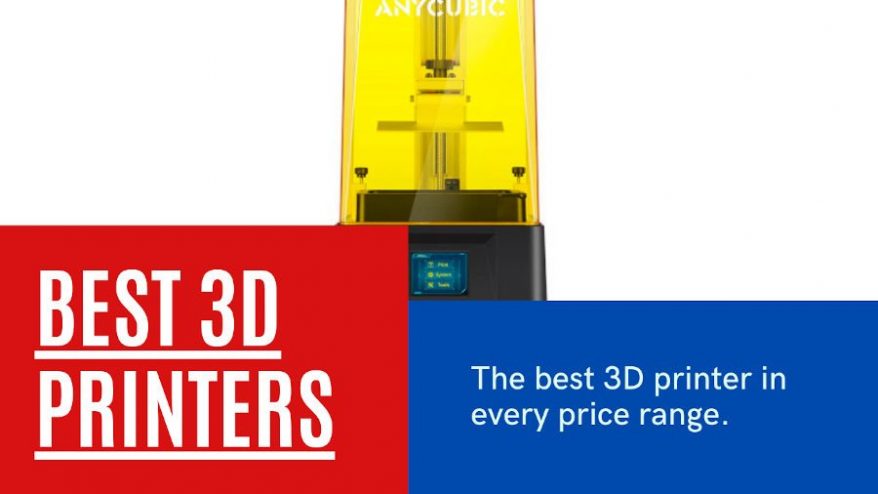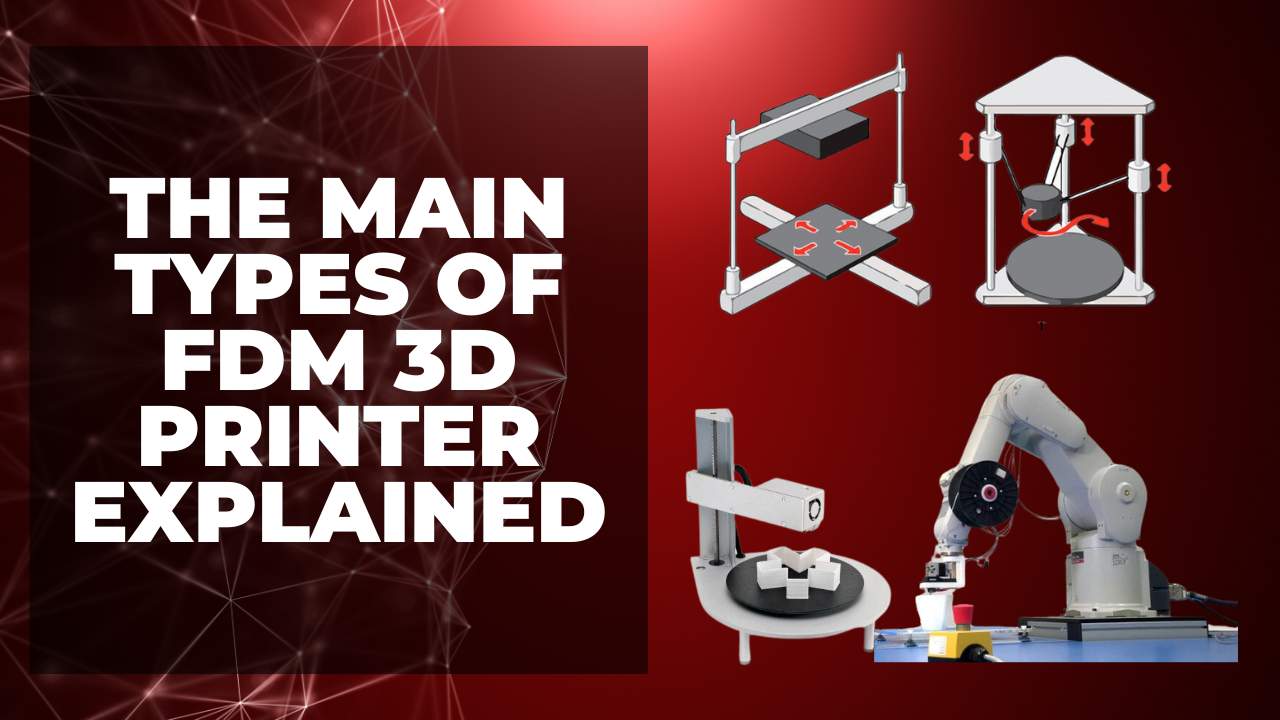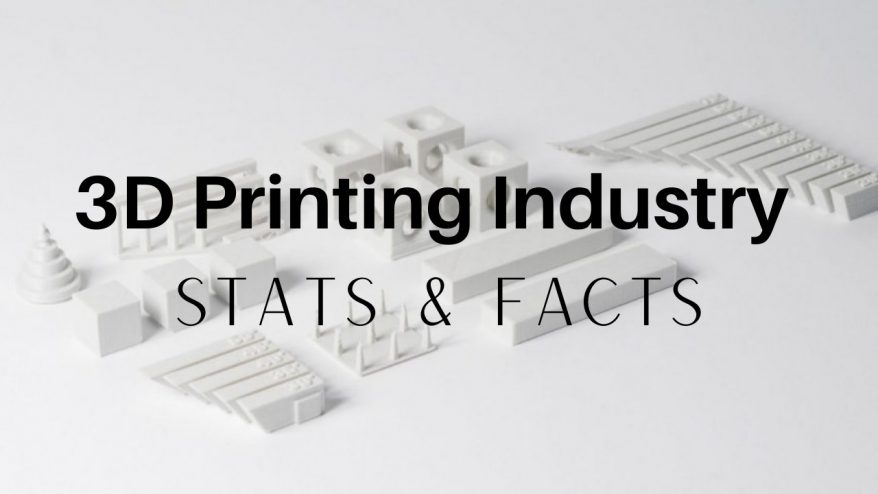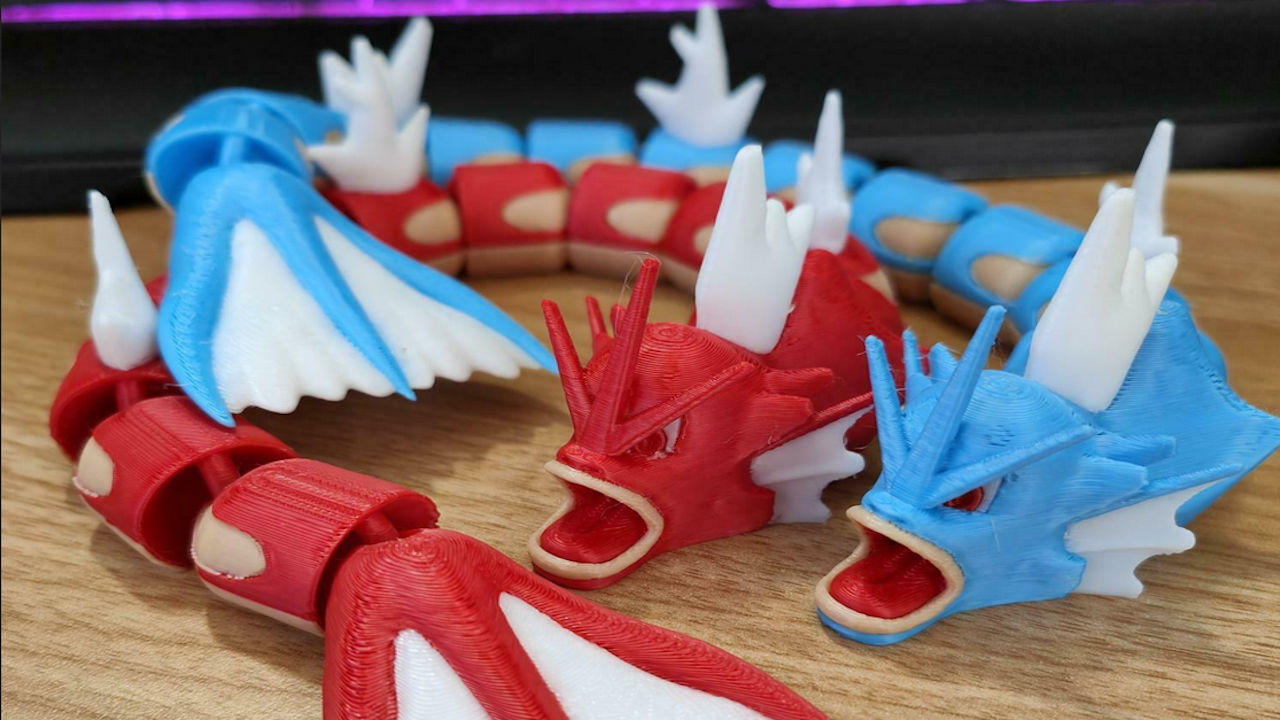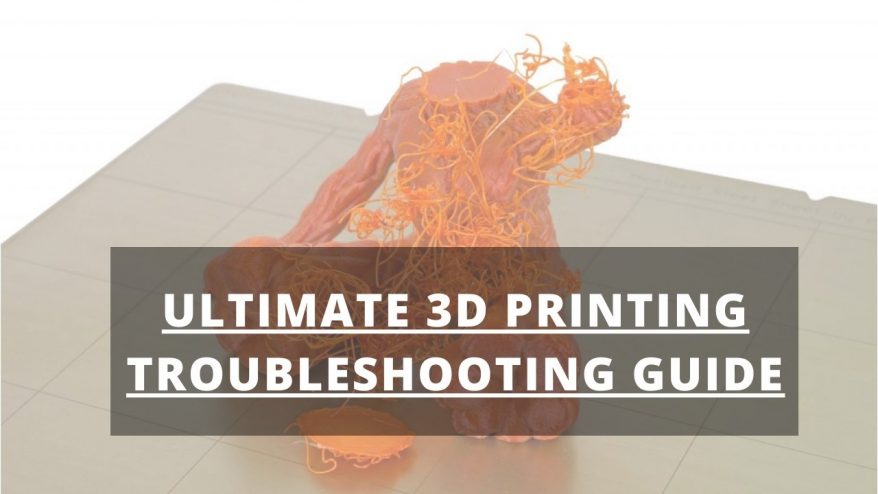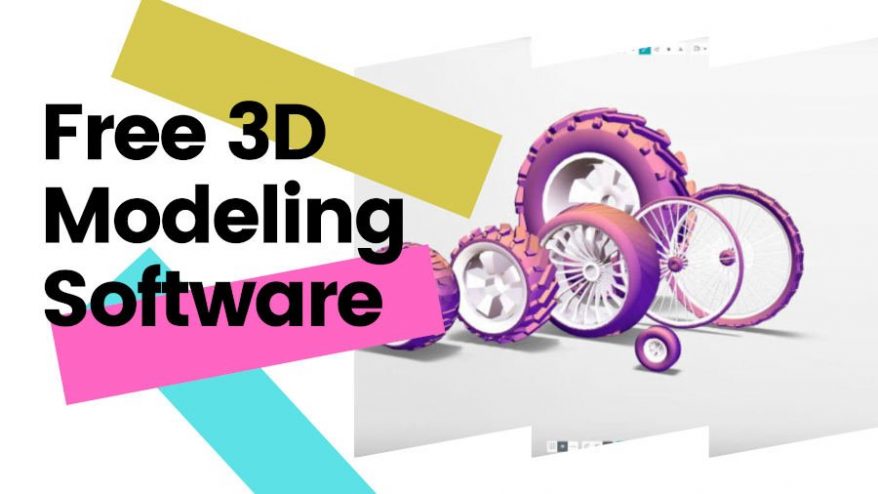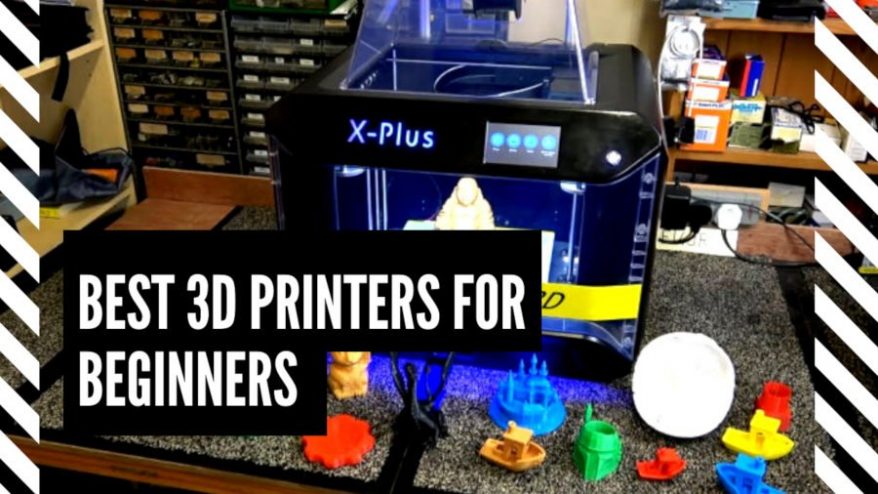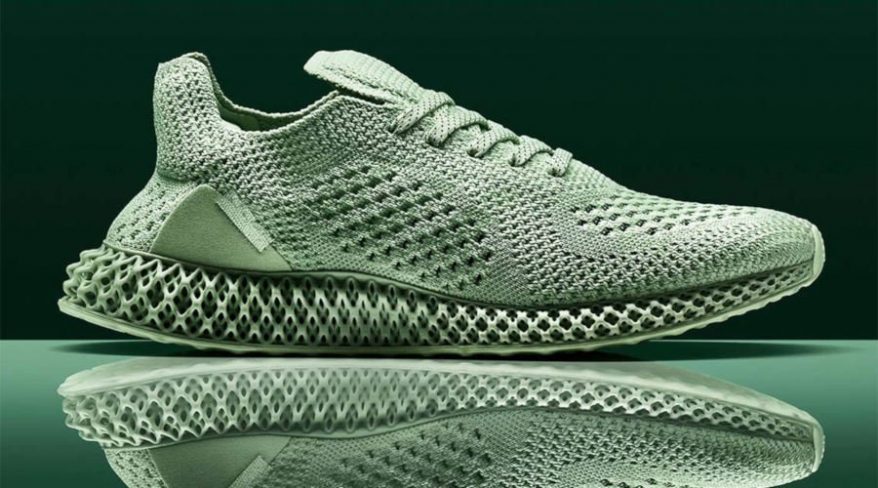Traditional housebuilding methods may have changed in the last 200 years, but they have retained one key element: humans. But now, industrial 3D printers can extrude concrete based on a 3D model and autonomously build houses. These gigantic 3D printers can 3D printed an entire house in just hours!
3D printing offers the chance to build houses faster, more accurately and cheaper than ever before. We will be showcasing some interesting 3D printed house projects that already exist, the advantages and disadvantages of 3D printed houses, and mentioning some 3D house printer companies who are working hard to commercialize the tech.
We also discuss the key advantages of 3D printing houses versus traditional housebuilding later on in the article.
Top 3D Printed House Projects
- World’s Largest 3D Printed House by Apis Cor in Dubai
- First family move into a 3D printed house in France
- Apis Cor 3D Printed House Built in 24 Hours
- ICON & New Story 3D Printed House in Austin, Texas USA
- Coachella’s 3D Printed Neighborhood
- The COBOD BOD2 Printer Takes Over Europe
- 3D Printed “Office of the Future” in Dubai
- SQ4D Releases First 3D Printed Home for Sale
- Gaia Italy 3D Printed Concrete House
- Project Milestone, Eindhoven — Building 5 3D printed condos in Holland
- Czech Out the Floating 3D Printed Home PRVOK
- 3D Housing 05 – Milan Design Week 3D printed building
We have also published the complete history of 3D printing, which you can view here.
The most Exciting 3D Printed Houses & 3D Printed Buildings
1. World’s Largest 3D Printed House by Apis Cor in Dubai
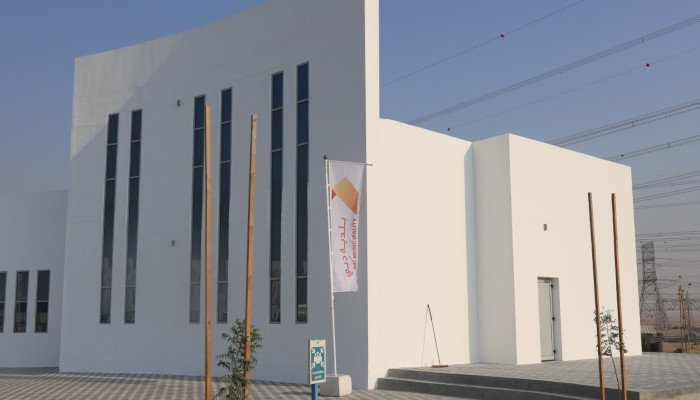
If you hear of an exciting or innovative building project, there is a high likelihood it will involve Dubai. Dubai have been championing ambitious architectural projects for years, and have recently made the bold move of aiming to have 25% of new buildings 3D printed by 2030.
This administrative building comprises two floors, featuring beautiful 3D printed architecture born out of an ongoing collaboration between Russian 3D printed house company Apis Cor and the Dubai Municipality.
We expect much more to come from Apis Cor in Dubai as this building is considered by them to be just a test for larger 3D printed house projects for the future. It is claimed to have been to test whether Apis Cor’s concrete 3D printer could print a building in Dubai’s heat — and passed with flying colors.
Expect more very soon: 3D printed apartment blocks, skyscrapers, landmarks and more.
For the full story covering the world’s largest 3D printed building, click here.
2. First family move into a 3D printed house in France
- 3D printed house price: £170,000
- Located: France
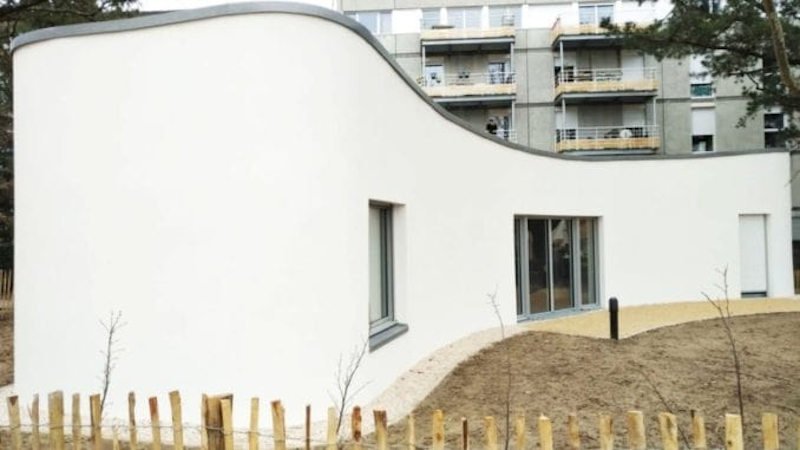
In July 2018, a French family moved into their new four-bedroom home, becoming the first family to live in a 3D printed house. This was a collaboration between the city council, housing association, and the University of Nantes. The goal was to build a prototype with the long-term goal of creating 3D printed houses that are cheaper and faster to build than traditional houses. The house cost around £176,000 – 20% less than traditional construction.
This 1022 square foot 3D printed house took 54 hours to build — though this was just the structure. An additional four months for fitting the windows, doors, and other parts was necessary before the home was finished. The team behind this extraordinary achievement now believe they could create a similar house in 33 hours, citing additional knowledge and tech advances.
Benoit Furet, the man behind the project, believes 3D printed houses offer a solution to the growing housing shortage and for social housing in the future. Moreover, he claims that with growing economies of scale and technological advances, 3D printed houses will become 40% cheaper to build in 10-15 years.
Perhaps the most exciting part of this build however is the architecture – the house was built to curve around environmentally-protected trees. This is simply not plausible for traditional builds as they are more restricted by the shape of bricks, whereas 3D housebuilding can create curved shapes without issue. This offers potential for more compelling designs, as well as creating custom houses to suit disabled people.
3. Apis Cor 3D Printed House Built in 24 Hours
- 3D printed house price: $10,000
- Located: Russia
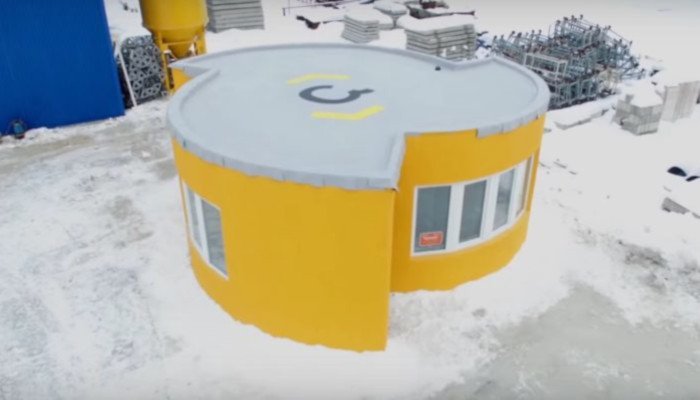
Probably the most famous and viral 3D printed house build, this interestingly shaped house was built back in 2017 in just one day – while it snowed! According to the team the house cost just over $10,000 to build, including the furnishings with windows and doors, though we will discuss why these figures may not tell the full story further on in this article.
A viral hit, this was definitely the moment the world woke up to the possibility of 3D printed concrete houses in the future. This viral video not only proved it could be done, but that 3D printed dwellings could be built faster than people could build them, and the cost of a 3D printed house was far lower.
Apis Cor’s build brought 3D printed structures into the public eye, encouraging others to get involved and democratize 3D printed house building.
4. ICON & New Story 3D Printed House in Austin, Texas USA
- 3D printed house cost: $10,000
- Located: USA
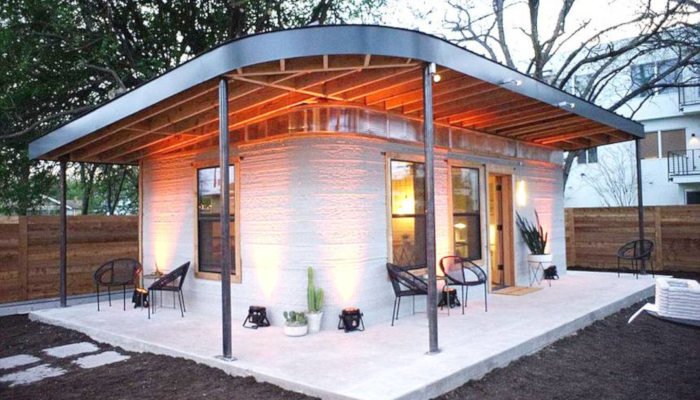
Another recent viral story, this collaboration between ICON and New Story made headlines when they 3D printed a house in Texas, USA earlier this year. The prototype 3D printed house built cost the companies approximately $10,000, though they assert that this number can be brought down to $4,000 going forwards.
The house, like Apis Cor’s 3D printed concrete house in Russia, was built in 24 hours, and is part of ICON’s longer-term plan to assist in infrastructure in poorer parts of the world through housing. Non-profit ICON has already built over 800 houses in Haiti, El Salvador, Bolivia and Mexico, and plans to utilize 3D printing to create low-cost houses in these areas – ICON currently source local workers but some areas may not have the skilled builders required.
Therefore, 3D printed houses offer a solution to this lack of skilled builder problem. Large construction 3D printers can be brought to these impoverished areas where there are few skilled builders to build homes for people in poverty. This is an example of 3D printing helping improve the lives of society’s most vulnerable, and we commend ICON and New Story for their fantastic work here.
This is also a project we are actually likely to see develop. New Story is Co-Founded and advised by some very powerful and successful people, including Glassdoor’s CEO, and Reddit Co-Founder Alexis Ohanian. Many of the people attached to the project have a track record of execution and success, so we look forward to seeing the project’s progress. Since the Texas project they have also printed a series of 3D printed houses in Mexico.
ICON Part 2: 3D printed home community in Austin
- 3D printed house price: $450,000
- Located: Texas
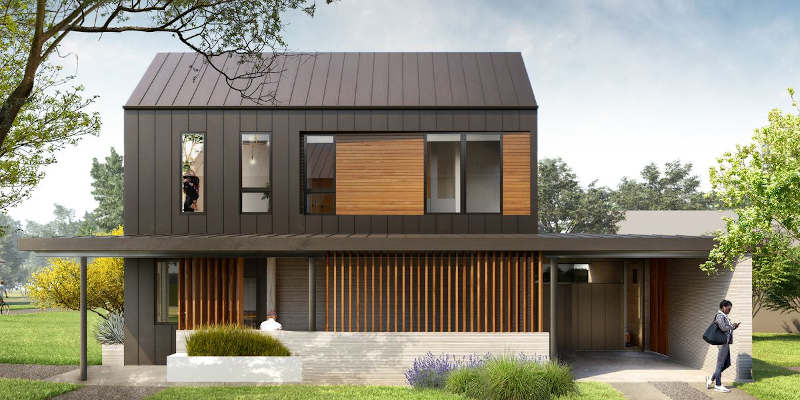
ICON has been keeping busy since our last update and has now formally listed their first 3D printed home for sale on the streets of Austin, Texas.
Joining forces this time with developer 3Strands, ICON has used its Vulcan technology to construct four multi-story buildings in East Austin ranging from 1,000 to 2,000 square feet, featuring modern open plans and timeless interiors.
This is in conjunction with their new East 17th Street initiative, a project that hopes to use this innovative technology to build a small community of 3D printed homes in the growing area of East Austin.
With the help of Logan Architecture, they’ve designed 4 styles of homes that take around 5-7 days to build and are planned to be move-in-ready by the summer of 2021.
5. Coachella’s 3D Printed Neighborhood
- 3D printed house price: $595,000
- Located: California
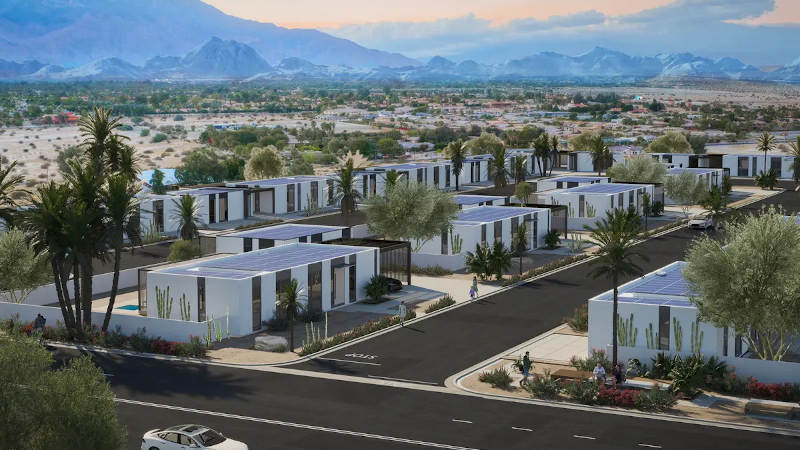
We’ve all heard of the Hollywood-infused Coachella music festival, but have you ever heard of Coachella’s 3D printed neighborhood?
Mighty Buildings, a 3D printing construction and technology company, and Palari Group, a specialized sustainable real estate company, are set to begin building what’s been dubbed the world’s first 3D printed neighborhood by the Guardian, CNN, and other major news outlets.
The neighborhood is named Rancho Mirage and will sit nestled in the waves of Coachella Valley.
Mighty Buildings and Palari Group plan to develop 15 homes by 2022, each consisting of three bedrooms, two bathrooms, a terrace, and a swimming pool within 1,450 square feet of space.
Made from a stone composite material, the walls are said to join together like Legos, according to Palari CEO Basil Starr.
There’s also the customizable option to add a 700 square foot extra residence, or AUD, to the property that will consist of two bedrooms and a bathroom.
Rancho Mirage has the potential to become the future blueprint of neighborhoods moving forward, not only for its immense sustainability but also for the incredible solution it poses for the global housing crisis.
Future News: Keep your eyes peeled for the 3D printed school Mighty Buildings has planned with Thinking Huts to open in Madagascar later this year.
6. The COBOD BOD2 Printer Takes Over Europe
- 3D printed house price: N/A
- Located: Belgium
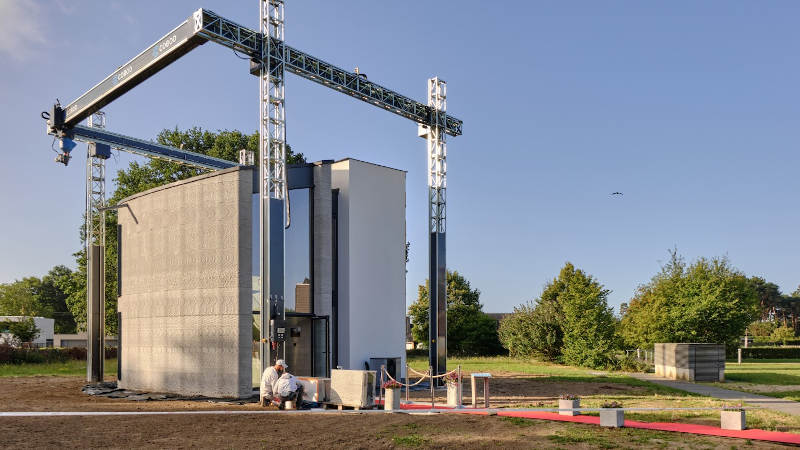
Sustainable building company Kamp C 3D printed an entire two-story house in Belgium’s Flanders region with Europe’s largest 3D printer.
The finished two-story terraced home came in just under 1,000 square feet. It’s a low-energy home with a green roof but still manages to blend seamlessly into the surrounding architecture.
The most impressive aspect of this project however is the construction process itself.
Traditionally, being a two-story building, construction would’ve taken place in two parts, off-site in a separate facility. But Kamp C ingeniously used the stationary COBOD BOD2 concrete printer to print it on-site in one piece.
COBOD, or Construction of Building on Demand, developed the BOD2 3D printer, which operates on three axes, making it possible to print in a circular design on-site, and more importantly, print multiple floors.
It’s not only about looks though. According to Kamp C project manager Marijke Aerts:
“The material’s compressive strength is three times greater than that of conventional quick brick.”
Construction began on March 19th, 2020, and took around three weeks to print, but Kamp C believes future homes can be completed in just two days.
COBOD Part 2
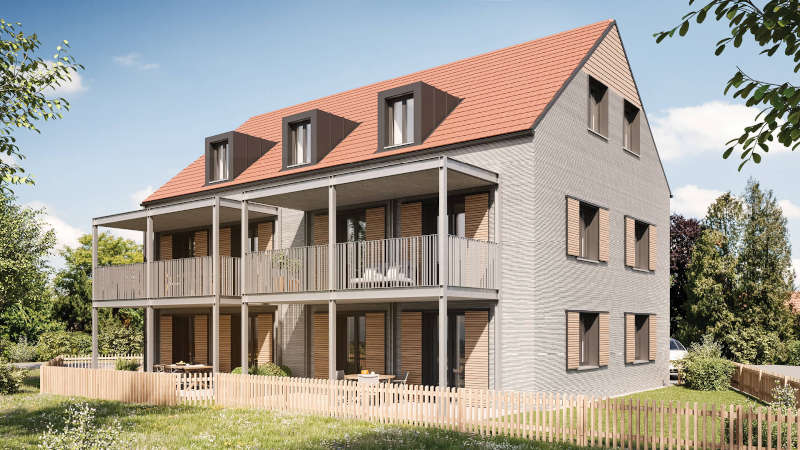
The COBOD BOD2 printer isn’t finished making headlines yet.
Over in Wallenhausen, Germany, German-based construction company PERI Group started construction on a 3D printed three-story multi-family apartment building, following the success of the two-story home they printed earlier that year.
The building will contain 4,090 square feet of live-in space and hold five apartments and a basement. The floorplans will vary between single occupants and families.
Construction began in November of 2020 with an anticipated finish of March-April 2021, so we expect to see them gracing headlines again very soon.
7. 3D Printed “Office of the Future” in Dubai
- 3D printed building price: $140,000
- Located: Dubai
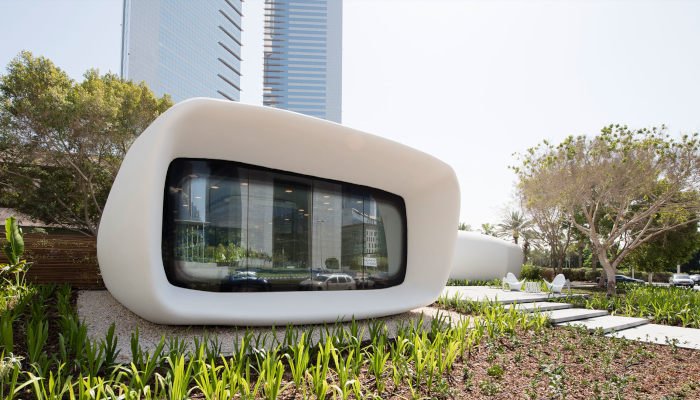
Dubai is always making headlines for being ambitious and outlandish in its declarations of future goals – none more so than their claim that 25% of buildings will be built using 3D printing by 2030. And they’re backing this up with action; this office — claimed to be the most advanced 3D printed building in the world — cost roughly $140,000 to build (not including finishing details) and took 17 days.
Affectionately named the “office of the future”, the building was created by a 20-foot-tall concrete 3D printer using a robotic arm to deposit cement. Only one employee was needed to monitor the house 3D printer whilst it printed, and seven employees worked on building components of the office whilst the printer worked.
Additionally, 10 electricians and other specialists worked on the inner workings of the office across the 17-day build. We cannot therefore call it a completely 3D printed house, as other workers filled in various other components. But 3D printing has never claimed to be able to insert complex electrical systems as it prints, just create the structure in record time. With this project showing huge ambition, perhaps Dubai will become a world leader in 3D printed houses.
8. SQ4D Releases First 3D Printed Home for Sale
- 3D printed house: $299,999
- Located: New York
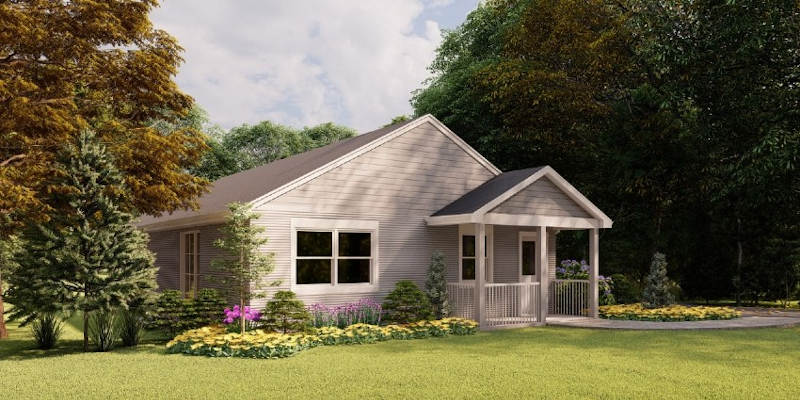
SQ4D, previously charmed the world in January 2020 when they built the then world’s largest 3D printed home, but now it’s charming us again, as they officially announce the first 3D printed home to receive a certification of occupancy in the US.
It’s currently listed for sale on Zillow at $299,999 – 50% cheaper than traditional new builds in the area.
The 1,400 square foot two-story home is made from special concrete material and boasts three bedrooms, two bathrooms, and a 2.5 door covered garage.
However, the real cleverness is found in their patent-pending ARCS technology.
ARCS, or Autonomous Robotic Construction System, is a low-power consumption technology that robotically builds the house on-site. Along with printing the exterior and interior walls, it also prints utility conduits, siding, and sheathing, effectively taking an entire crew’s worth of labor down to three people.
With ARCS, each home took only 48 hours of print time over a few weeks.
When discussing the power and implications this technology could pose for the future, SQ4D’s director of operations Kirk Andersen had this to say:
“I want people to not be afraid of automation…it is just a different tool and different method. But it’s still the same product… we can make things more affordable and safer. We can use the technology to tackle homelessness and aid in disaster relief in an eco-friendly way.”
9. Gaia Italy 3D Printed Concrete House
- 3D printed apartment price: $1,000
- Located: Italy
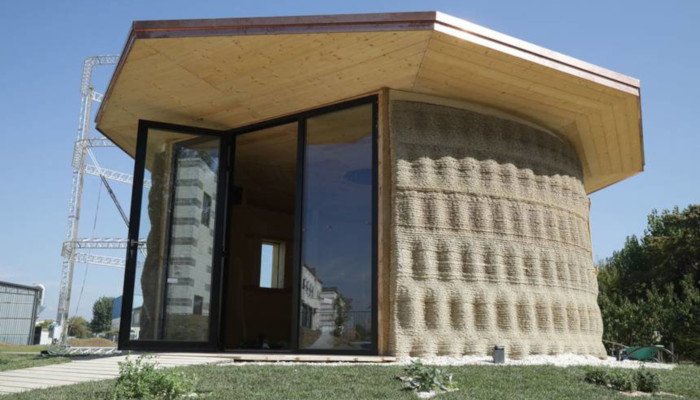
Italian house 3D printing company WASP built ‘Gaia’, a 3D printed hut made from a mix of concrete and mud-based material. The 215 square foot structure took 10 days to complete, though the total time when accounting for all the furnishings and additions would be longer. The most extraordinary part is that the hut cost just $1,000 in materials to build, though this doesn’t factor in labor and other costs.
- WASP make a number of desktop delta FDM printers. You can also view our ranking of the best delta 3D printers.
Like New Story’s plans for the developing world, this interesting prototype may form the basis for building houses in poorer countries. In more deprived areas where the imminent problem is shelter rather than wiring and pipes inside houses, these cheap 3D printed houses offer an effective solution to a real crisis.
10. Project Milestone, Eindhoven — Building 5 3D printed condos in Holland
- 3D printed building price: N/A
- Located: Holland
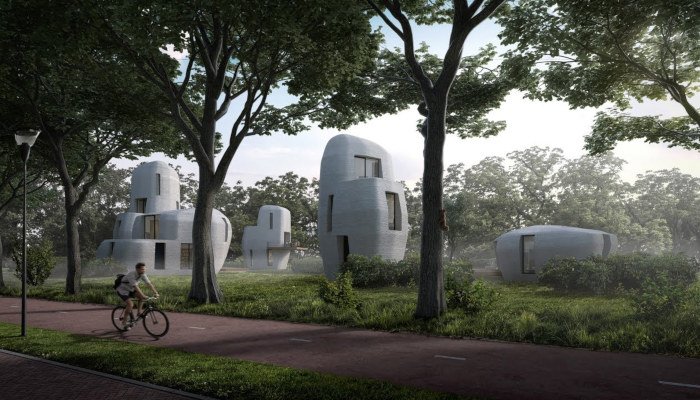
Project Milestone – the code name for the project to develop five habitable and beautifully shaped homes in Eindhoven, Holland, is a fascinating collaboration between Houben and Van Mierlo Architecten, Van Wijnen, and the Eindhoven University of Technology.
Pioneered as a solution to the shortage of skilled bricklayers in the Netherlands, the first of these houses – and the first 3D printed house for sale – attracted over 20 interested buyers in its first week on the market.
Though currently only the cement structure of the houses are 3D printed, with advances in technology it is hoped that by the time the fifth house is built that other features, such as drainage pipes, will also be made using the house 3D printer. This will further reduce costs and influence 3D printing’s adoption in housebuilding.
11. Czech Out the Floating 3D Printed Home PRVOK
- 3D printed house price: N/A
- Located: Czech Republic
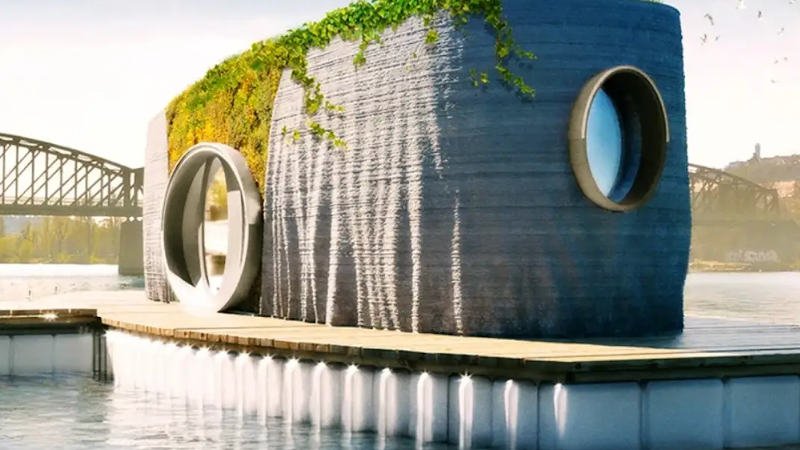
No home design is safe from the evolution of technology as the Czech Republic sets sail on the new, more or less, 3D printed houseboat. This 462 square foot 3D printed house may be tiny, but it packs a serious punch in terms of gumption and sheer originality.
Called the PRVOK, the house has space for two, including a living room, kitchen, bedroom, and bathroom.
It’s devoid of all sharp angles, consisting of only curves, and is printed with an external and internal layer that’s filled with insulation in between. The house is also fitted with eco-tech, from a recirculating shower to a green roof.
So, imagine a hobbit home from the rolling hills of the shire meets the rivers of a bustling metropolis.
PRVOK’s main focus was on speed and efficiency, claiming to be seven times faster than building a traditional brick house.
It’s made from specially formulated concrete with nano polymers that harden faster than normal concrete. Within the first 24 hours, it registers at the standard hardness of a brick house, and after 28 days it’s hardened to that of a bridge.
It’s claimed this house can last up to 100 years.
Needless to say, we’re excited and hopeful to see these homes floating through our waterways in the near future.
12. 3D Housing 05 – Milan Design Week 3D printed building
- 3D printed house price: N/A
- Located: Italy
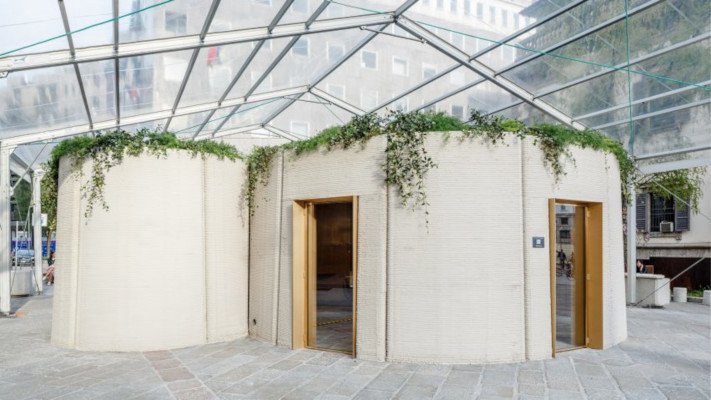
A collaboration between engineering firm Arup and architecture studio CLS Architetti, and 3D printed by CyBe Construction; this stylish 3D printed house, named ‘3D Housing 05’, exhibited at Milan Design Week following its construction in November 2018.
The 3D printed home, built in a week on a Milan square using recycled concrete, is around 100 square meters and contains a living area, bedroom, kitchen, bathroom and roof terrace. Prominent 3D printed house constructor CyBe Construction created the house with their concrete 3D printer; able to print a single wall in between 60 to 90 minutes.
The most exciting part is the recycled concrete, developed by Italcementi, which uses debris from demolition sites to create the 3D printable material. This can then be recycled again after the building has been demolished.
Massimiliano Locatelli, the principal architect at CLS Architetti, claims that each square meter costs €1,000 to build – half the price of traditional construction. With advances in the technology, he believes this can be reduced to between 200-300 euros in the future.
Advantages of 3D printed houses
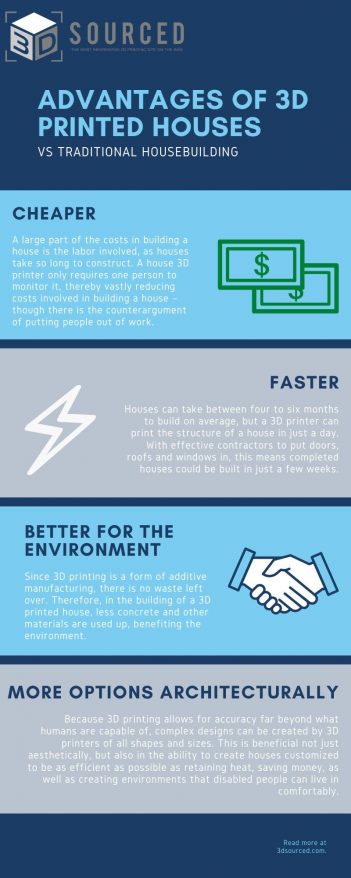
Environmentally Friendliness: 3D printing is a form of additive manufacturing and only uses up the exact material required to build a house. Therefore, in the building of a 3D printed house, less concrete and other materials are used up than traditional methods, benefiting the environment. Concrete production is one of the main pollutants, so minimizing this is key.
3D printed houses cost less: A large part of the costs in building a house is the labor involved, as houses take so long to construct. A house 3D printer only requires one person to monitor it, thereby vastly reducing costs involved in building a house – though there is the counterargument of putting people out of work.
Moreover, the University of Tartu, Estonia, with the Estonian University of Life Sciences, have collaborated to create a low-cost 3D printed house concrete material made primarily of peat which could reduce the material cost of building a house by up to 10x! Additionally, because peat is so common it could be dug up locally — such as in deprived third-world countries — and used to build houses, so materials do not have to be shipped there.
3D printed houses can be made quicker: Houses take between four and six months to build on average, but a 3D printer can print the structure of a house in just a day. With effective contractors to put doors, roofs and windows in, this means completed houses could be built in just a few weeks.
More options architecturally: Because 3D printing allows for accuracy far beyond what humans are capable of, complex designs can be created by 3D printers of all shapes and sizes. This is beneficial not just aesthetically, but also in the ability to create houses customized to be as efficient as possible as retaining heat, saving money, as well as creating environments that disabled people can live in comfortably.
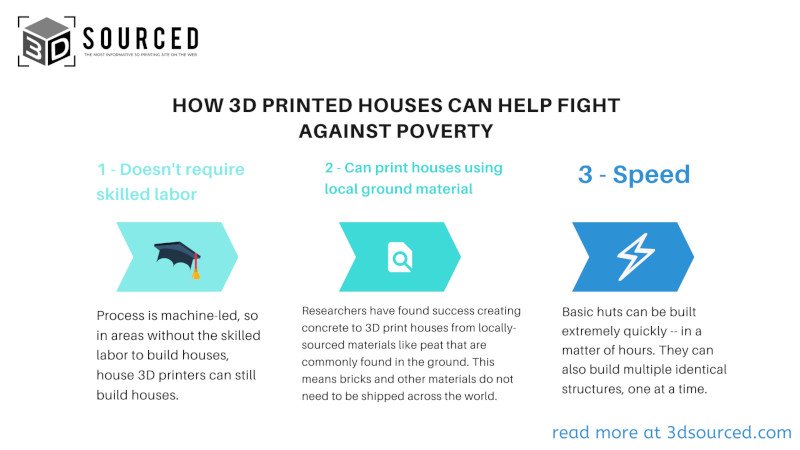
Ability to help those in need: Being able to create basic shelter structures quickly, cheaply, with minimal labor and with accessible materials makes 3D printing the only clear option for the task. It is no wonder therefore that much research is being conducted in order to refine the technology, and with non-profits such as New Story attempting to utilize 3D printing in the third world.
However, it is still important to be realistic.
3D printed houses are likely not as cheap as the companies who have built 3D printed houses claim they are. They only list the cost of the house in terms of the materials consumed to build it, omitting key factors such as labor, the cost of the printer (renting or buying), interior and external finishing, and wiring, pipes and other key foundations.
The house in Nantes, France built for £170K is an accurate cost for a habitable 3D printed building, not the outlandish claims to build a fully-functioning domicile for $4,000.
How much does a 3D printed house cost?
This question of 3D printed house cost is a common one, and just as with traditional housebuilding, it depends. Though projects such as Apis Cor’s 24-hour build cost just around $10,000, this is a far smaller and more basic house than most in the West are accustomed to.
The same is the case for ICON and New Story’s 3D printed house in Texas. The house is small, basic and the house 3D printer had already been moved there. Therefore, for a 3D printed domicile a whole family could comfortably live in, it would probably not suffice.
The most accurate project in terms of a 3D printed house’s cost is the French build in number 2 on our ranking. This project cost around $170,000 and was roughly 20% than traditional methods would have cost.
However, construction 3D printing is still in its infancy, and will likely come down in price quickly. The main costs are the materials and labor, and without any labor required except one operator to monitor the print, these costs are dramatically lower.
When will 3D printed houses be available?
Arguably, they are already available. 3D printable houses are a reality, they are just not widespread. The companies developing construction 3D printers for houses are still refining the technology, and do not have enough of these machines to build thousands of houses yet.
We are likely to see a large increase in 3D printed buildings in the next decade or two, with countries like Dubai striving to 3D print 25% of new buildings by 2030.
Can I design my own 3D printed house models?
Yes, you can. There are a variety of architecture design software tools for creating 3D models of buildings. Architecture firms use 3D printing to create miniature versions of future building projects, and house 3D printers themselves create buildings based on 3D models.
- For more information, view our ranking of the best architecture software
- We also have a ranking of the best 3D software modeling tools
Conclusion: The future of housebuilding
Though far from being perfected, the potential with 3D printed houses is exciting. It has proven to work and stand up to the elements in Europe and the USA, and really can work faster and more efficiently than people.
In poorer areas with few skills builders and little building material available, large house printers such as those by ICON and New Story offer a fantastic way to build basic huts and 3D printed shelters. If able to use locally source material, this reduces building costs dramatically, allowing for shelters to be built for those who need them most.
3D printing therefore doesn’t just promise to revolutionize construction for rich tycoons who want to boast about their latest build, but offers a scalable and effective solution to homelessness in the developing world.
The question now is how the technology will be received: will people resent concrete printers for making builders obsolete? Or will they take to them, glad that they can save them money on their dream build?
Even the most advanced house printers of the future will require skilled operators to prevent accidents, and we are a world away from a printer that can concurrently 3D print the glass windows, wooden doors, pipes, electronics and other furnishings along with the house.
House 3D printers therefore do not replace people, but complement them; doing the heavy lifting while the specialists do what they do best. It is important therefore to focus on how 3D printed houses can benefit both us and those in the third-world, and respect the advantages that 3D printed houses offer.

